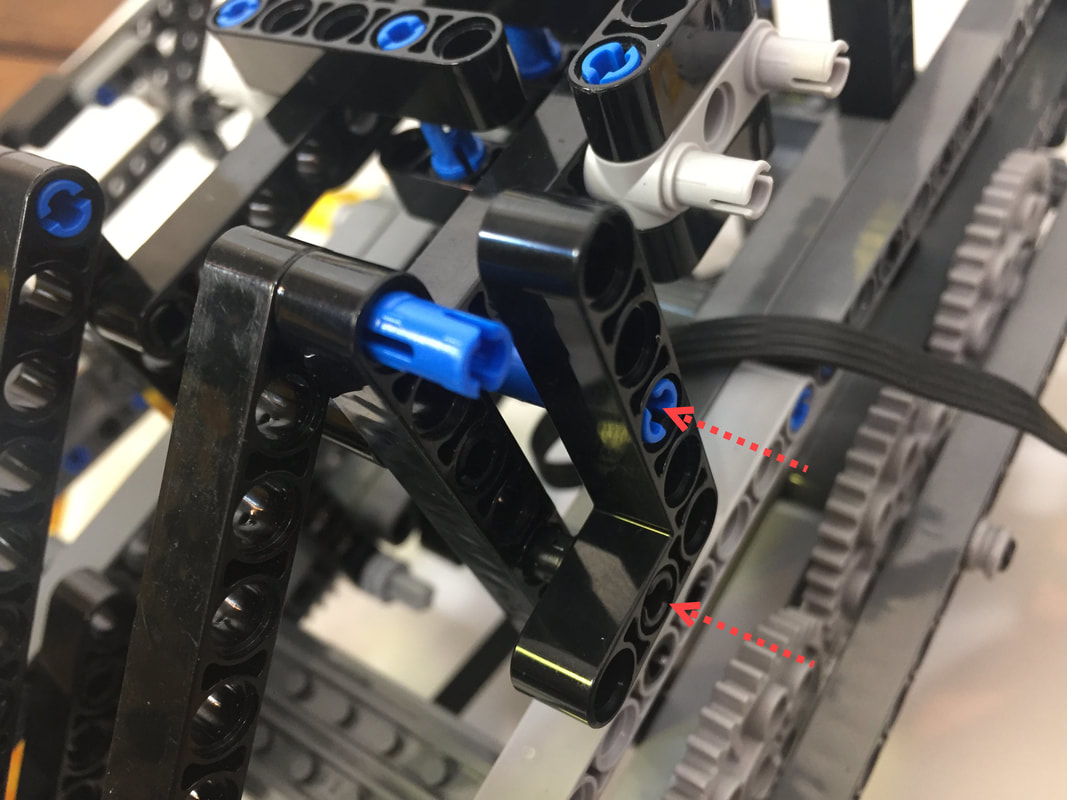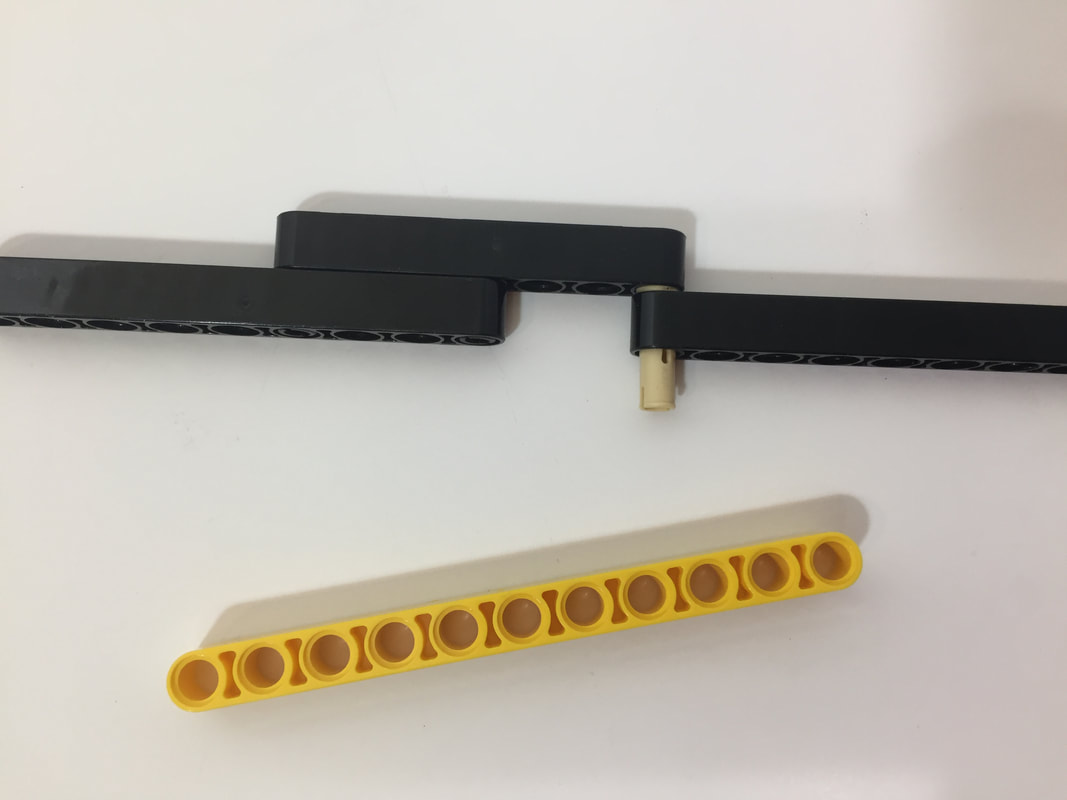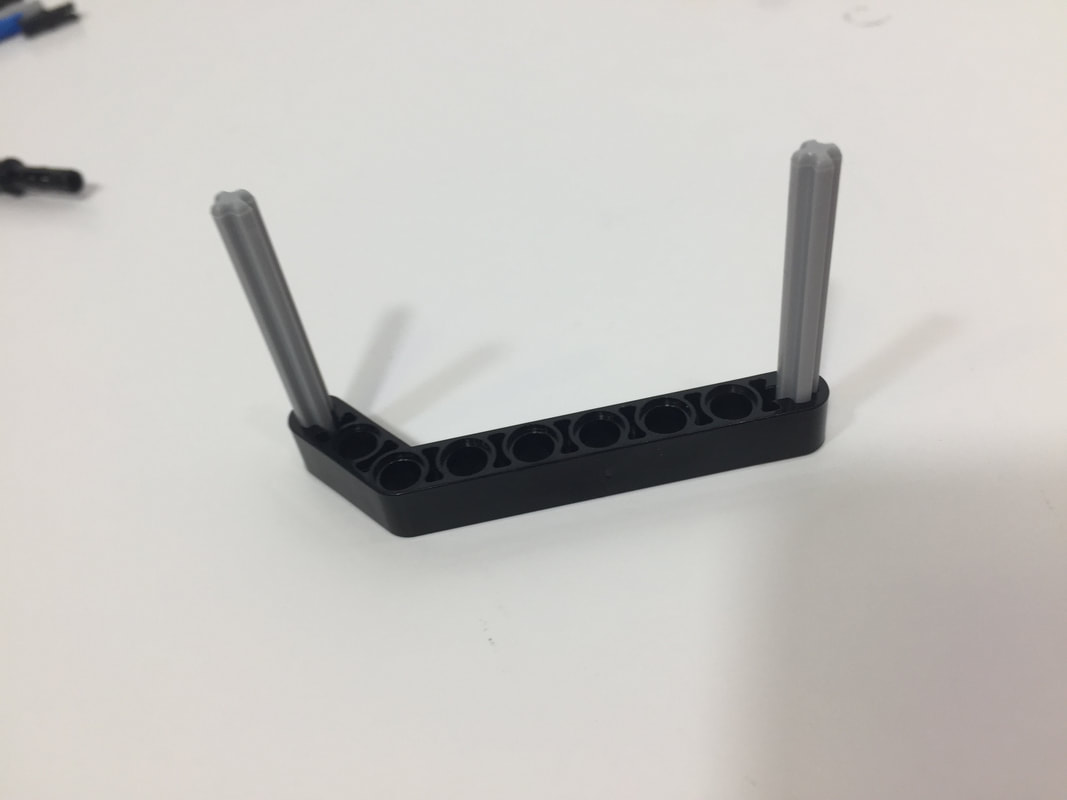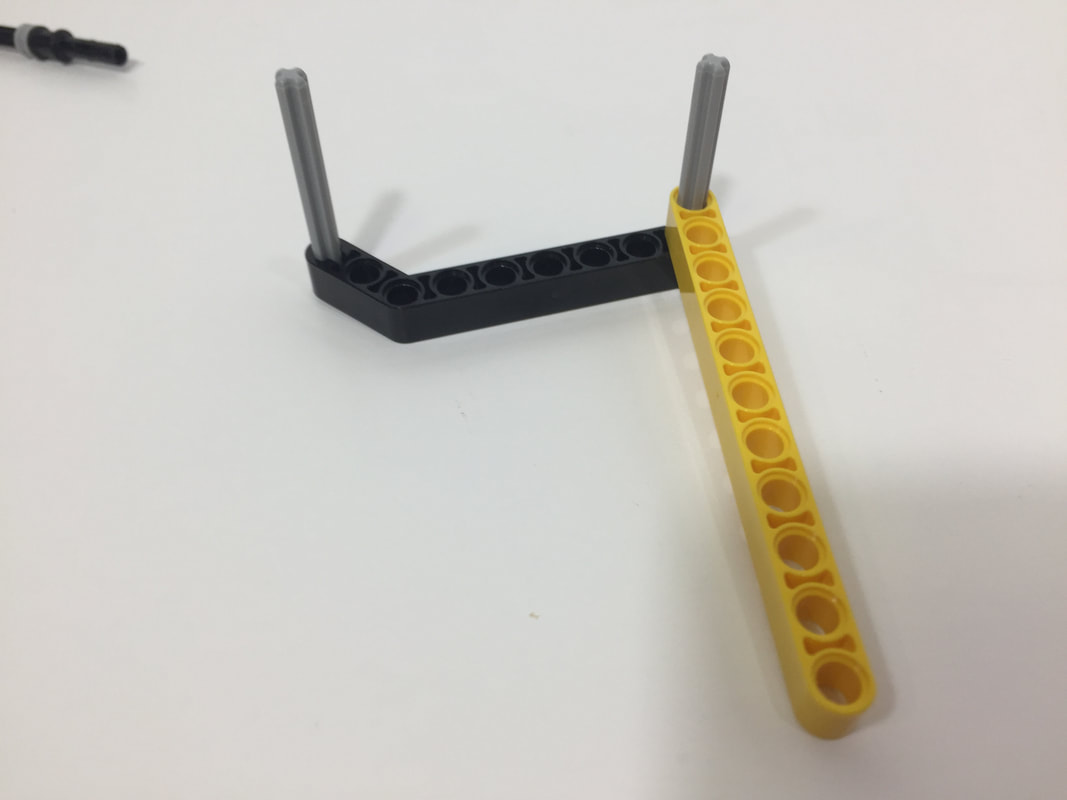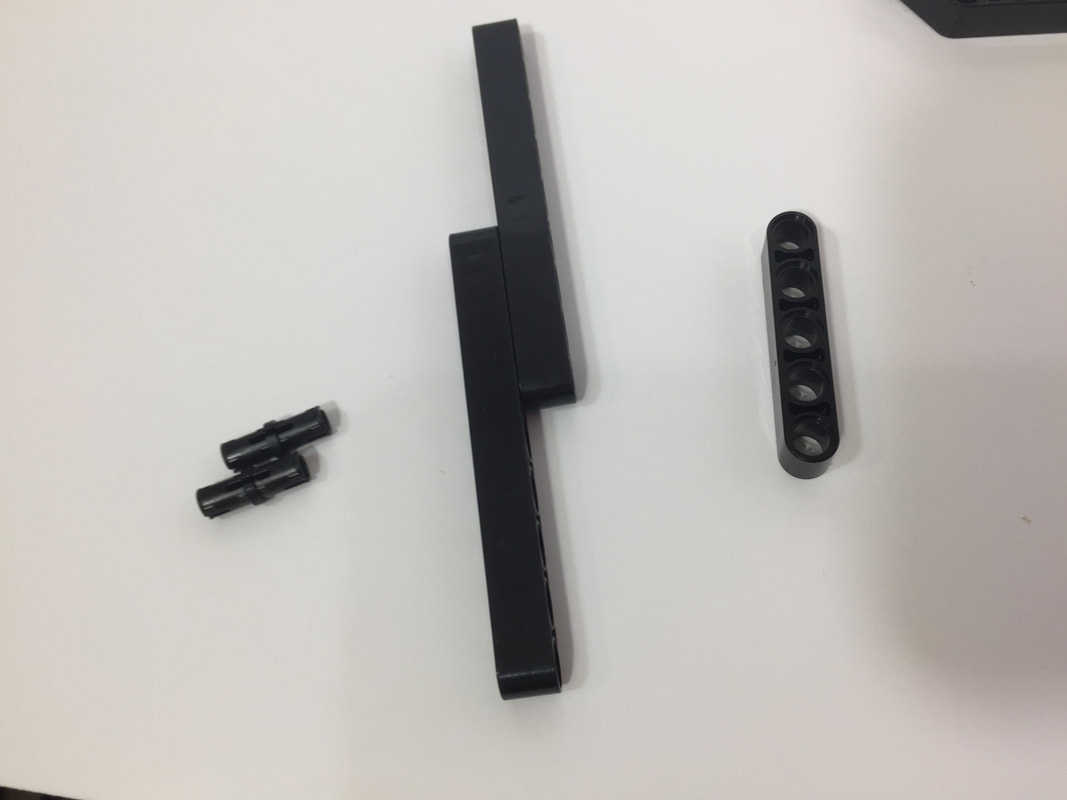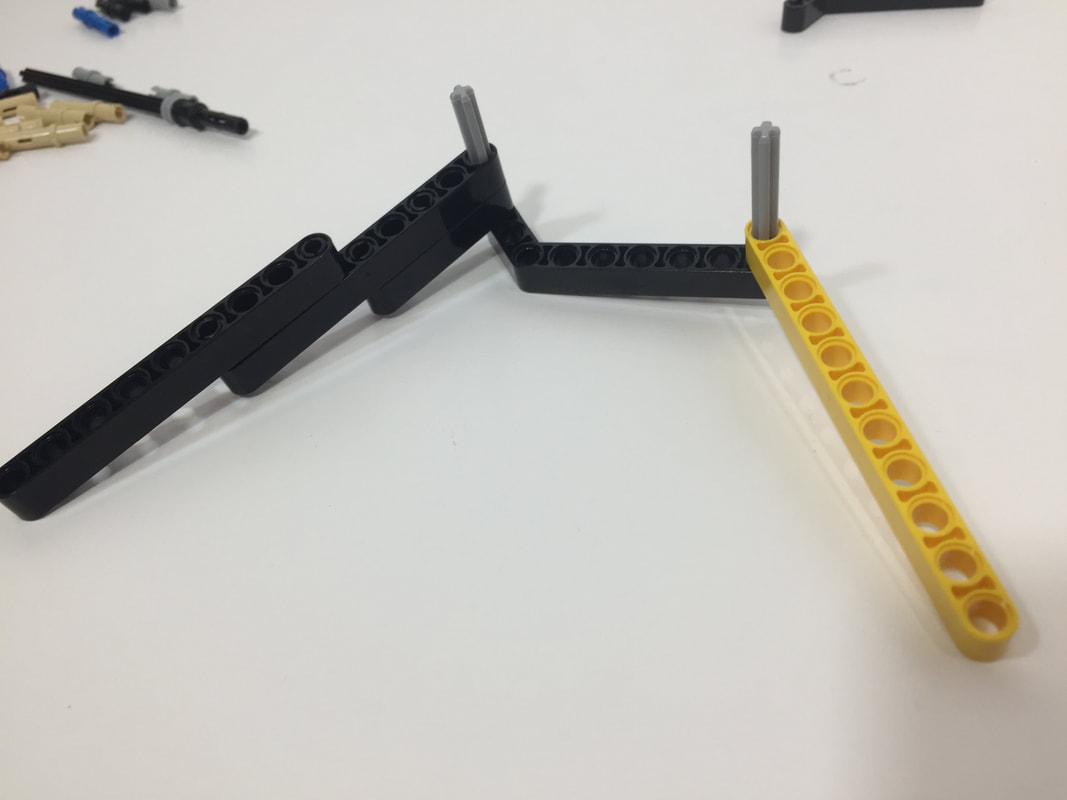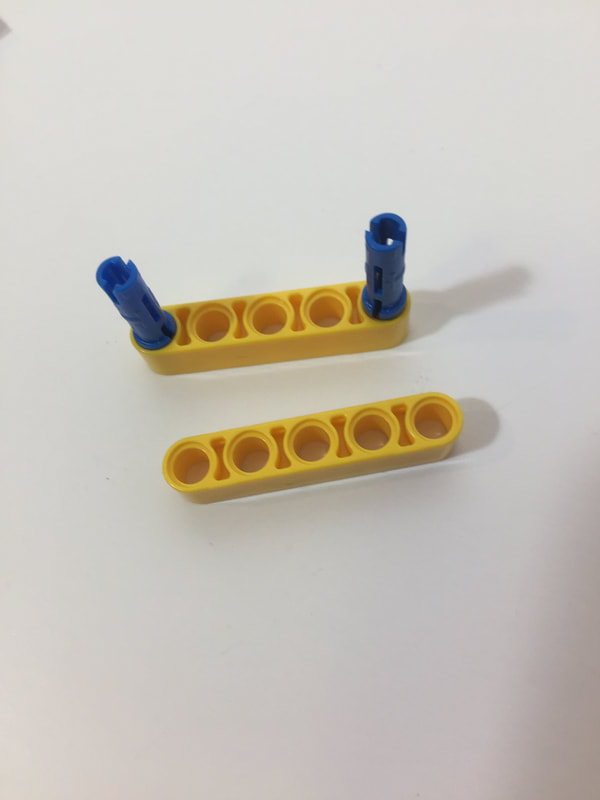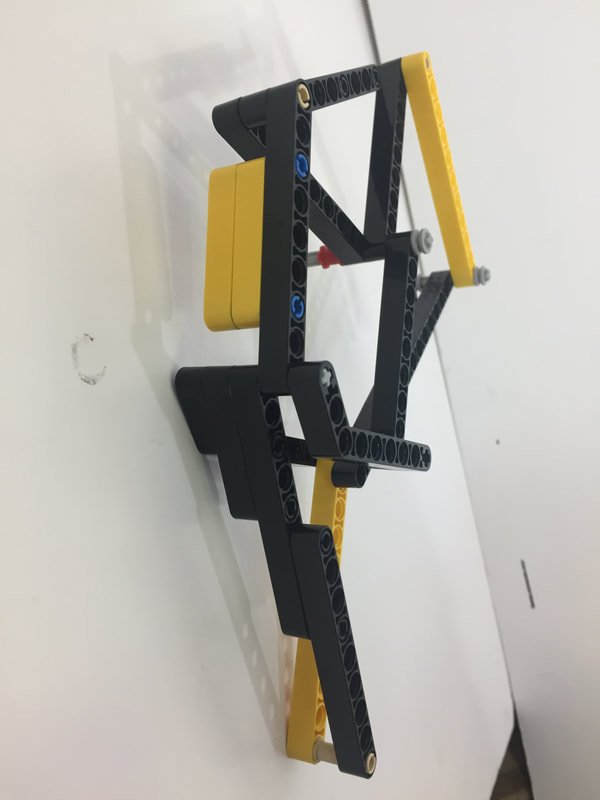Strandbeest
Thank you for your magical beests, Theo!
Below are the LEGO beam hole counts, which have one more hole than the linkage's bar lengths that are simulated below, since when measuring the length of LEGO beams, the first hole is counted as zero.
Below is how this LEGO approximation compares to Jansen's holy numbers for Strandbeest's linkage (scaled so that the crank's length=3)
This LEGO approximation of Strandbeest was found with this Strandbeest optimizer for LEGO, where you can create your own version of the linkage, and find other approximations of Strandbeest.
As shown below, Strandbeest's speed and turning can be smoothed by adding feet that slide or rotate described here.
We purchased the plastic LEGO parts from Bricklink
We purchased the motors, controllers and battery box from Amazon
We purchased the 3/16 inch OD metal support rods from our local hardware store. We cut a 36 inch long rod in half for this build, but the resulting 18 inch rods are a bit too long.
If you've never used Bricklink, an easy way to browse for parts is by going to a larger store. Here's a list of stores in the USA.
And below is an example search in a store for Technic beams.
We'll try to get some step-by-step frame instructions up, but it can built a variety of ways as long as the the support rods are 2 holes below the crank's Center of Rotation, and 8 holes to the left or right. For now, below is the basic layout of each frame side. Both sides of the frame are the same, just flipped around.
Step-by-step leg instructions are further down the page.
Note that each side's metal support rods pass thru 2 holes lower, and 8 holes to the left (or right) of its crank's center of rotation. This required the upper and lower 15-hole beams on the left side of the image to protrude 1 hole out from the end of the frame.
Frame triangles are critical for making strong frames for walkers, but LEGO's integer-based beam lengths can make it difficult to find diagonal beams of the correct length. You can find other ideas for creating triangle-based frames with LEGO beams in this blog post.
Frame triangles are critical for making strong frames for walkers, but LEGO's integer-based beam lengths can make it difficult to find diagonal beams of the correct length. You can find other ideas for creating triangle-based frames with LEGO beams in this blog post.
Below is the spacing for the legs
Be sure to add the below outer frame so that the outer axle is connected to the Center of Rotation!
With the undercarriage mounting it's pretty easy to swap between the battery box and EV3 brick
Below are more details for mounting the EV3 brick:
The Mindstorms medium motors are longer than LEGO's power function medium motors, so they had to be mounted on top of the 40 tooth gears. Alternatively, the frame could be widened to accommodate the longer motors, so they could be mounted on the same beam as the gears (like how the Power Functions' Medium Motors are mounted above).
For more details on how to manage linkage Dead Points see our Blog Post.
The two metal support rods were cut to 18 inches in length (by cutting a 36 inch aluminum rod in half).
Leg Instructions
Make 8 of the following legs
Below is one idea for making a strong center crank of length 6:
The above gray axles have a length of 5
More ideas for managing Dead Points can be found here.
Finished.




















